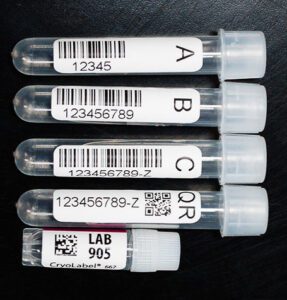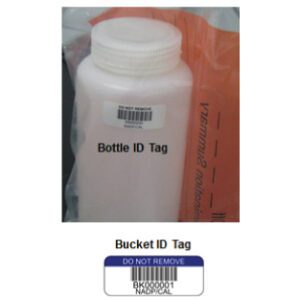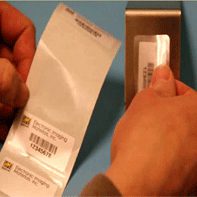
You’re juggling hundreds—or even thousands—of samples in a single week, each carrying data for a research study or patient diagnosis. Misplacing just one tube can derail entire projects or compromise patient care. Laboratory barcodes are a key solution to preventing these slip-ups. These small yet powerful codes act as your lab’s safety net, ensuring every sample remains traceable, every record stays accurate, and compliance requirements are met without fail. But how do laboratory barcodes actually work, and what does it take to set them up effectively?
Why Barcodes Matter in Lab Environments
Laboratories have demands that go far beyond typical office settings. Extreme temperatures, water baths, harsh chemicals, and a constant hustle of testing and inventory management all put your labeling system to the test. That’s why laboratory barcodes are so indispensable. These codes create a standardized method of identifying samples, solutions, and equipment that enable labs to eliminate guesswork, reduce human error, and streamline day-to-day tasks.
Error Reduction & Efficiency
Human errors in labeling can lead to mislabeled samples or lost inventory—a nightmare for any lab. With barcoded labels, technicians simply scan each code, automating data capture and minimizing mix-ups. Whether you’re running a healthcare facility or an academic research center, high-quality barcodes mean fewer do-overs, less wasted material, and more time focusing on the real work of discovery or patient care.
Seamless Compliance
Barcoded labels help you remain compliant with regulatory bodies, from HIPAA requirements in patient-focused labs to internal protocols in research institutions. Having a scannable record for each sample not only proves compliance but also makes audits or inspections quicker and smoother.
Understanding the Basics of 1D vs. 2D Barcodes
When we talk about barcode systems for labs, we’re often referring to two main types of codes: 1D and 2D. Each has its pros and cons, and the right choice depends on how much data you need to store and how you plan to scan or print the labels.
1D Barcodes (Linear)
These are the classic barcodes you see on retail items, characterized by vertical lines of varying widths and spacing. A 1D barcode can store a moderate amount of information, such as a product or sample ID. Subtypes include Code 128 and Code 39, which are frequently found in laboratory settings for straightforward identification tasks.
- Advantages: Easy to generate and read, widely compatible with existing scanners.
- Limitations: Limited data capacity—best for simpler applications like basic ID numbers.
2D Barcodes
2D barcodes store data in both horizontal and vertical dimensions, allowing them to carry far more information in a compact space. They often appear as squares with dots or patterns, such as QR codes or Data Matrix codes.
- Advantages: High data capacity in a small space, can encode complex information (e.g., patient data, experiment ID, or storage details).
- Limitations: Requires a 2D-capable scanner; more complex to print and decode.
No matter which type you choose, laboratory barcodes allow you to organize large volumes of information with just a quick scan, significantly speeding up lab processes.
The Technology Behind Barcode Systems for Labs
Barcode technology has two primary components: label printing and barcode scanning. Both must work in tandem with your data management software—often a Laboratory Information System (LIS)—to keep track of every sample accurately.
Label Printing
- Thermal Transfer Printers: These printers use a ribbon to transfer ink onto labels, creating durable images that resist moisture and fading. They are ideal for labs that require high durability and chemical resistance.
- Direct Thermal Printers: These produce images by applying heat directly to the label. While often more cost-effective, they are less resistant to high heat or extended storage.
- Inkjet or Laser Printers: While common in office environments, these printers are generally not suitable for most laboratory settings. Even with specialty label materials, they lack the durability needed to withstand moisture, chemicals, and extreme temperatures, so we do not recommend them for lab use.
Barcode Scanners
- 1D Scanners: Perfect if your lab mostly uses 1D barcodes. They typically have a linear imager or laser that decodes the pattern of lines.
- 2D Scanners: These can read both 1D and 2D codes, offering more versatility. If your facility wants to embed additional data—like expiration dates or batch numbers—2D scanning might be your best bet.
Integration With LIS
Your laboratory barcodes only become truly useful if they’re tied to a system that can record and retrieve the stored information. A Laboratory Information System (LIS) is a software platform designed to track samples, handle test results, and maintain patient or research data. When barcodes sync with a LIS, all a technician has to do is scan the label, and the relevant data populates instantly, minimizing manual entry errors.
Common Applications in Laboratory Settings
Barcodes can benefit nearly any lab task that involves tracking items or data. Below are a few prevalent use cases:
Sample Tracking
From blood vials to microcentrifuge tubes in biotech research, barcoded labels allow you to follow each sample from collection to storage to testing. This approach eliminates guesswork and ensures an accurate chain of custody.
Lab Inventory Tracking Barcodes
Reagents, chemicals, and other consumables often come and go quickly. Using lab inventory tracking barcodes streamlines reordering and prevents shortages or overstocking. The system can automatically log each inventory movement, ensuring you always know what you have on hand.
Equipment Management
Large academic or industrial labs frequently label equipment so technicians can track maintenance dates and usage logs. Barcodes ensure that instruments are serviced on time, which reduces the risk of inaccuracies from malfunctioning machines.
Regulatory Compliance
In healthcare-focused labs, barcodes are pivotal for meeting HIPAA requirements. They can mask personal data by referencing a secure ID that’s only accessible through the LIS. Similarly, pharmaceutical labs often print barcodes on pharmaceutical labels to maintain strict traceability for each batch.
Implementing or improving laboratory barcodes can be a game-changer for efficiency and accuracy. Electronic Imaging Materials can guide you through selecting the right materials, printer types, and code formats to ensure a seamless integration with your existing workflows.
The Cost-Benefit Analysis of Implementing Barcodes
At first glance, setting up a barcode system requires capital outlay—printers, scanners, label materials, and perhaps a software upgrade. However, the long-term benefits often far outweigh these initial costs.
- Reduced Errors: Cutting down on mislabeled samples or manual data entry mistakes can save thousands of dollars in wasted reagents, staff hours, or regulatory fines.
- Time Savings: Technicians scan barcodes in seconds, bypassing the tedium of writing or typing details manually.
- Better Workflow Efficiency: With fewer labeling or tracking issues, lab personnel can focus on critical tasks, like data analysis or experimental design.
- Improved Compliance and Auditing: Maintaining digital records from barcodes simplifies the auditing process, preventing costly disruptions.
A Real-World Success Story From Hawaii Ant Lab
Tackling invasive ants is no small task—just ask the dedicated researchers at Hawaii Ant Lab (HAL). Their work revolves around identifying, tracking, and ultimately controlling the spread of harmful ant species that threaten Hawaii’s delicate ecosystems. In practice, this means handling vials of peanut butter solutions (a favorite bait among certain invasive ants) and subjecting samples to demanding procedures like water baths and greasy, hands-on field tests.
Before partnering with Electronic Imaging Materials, the HAL team struggled with labels that fell off or smudged under these harsh conditions. Wasted time, increased costs, and mislabeled vials were constant headaches. Thanks to EIM’s water-resistant, extra-adhesive labels—which can stand up to repeated water baths, oily surfaces, and the rigors of daily lab work—Hawaii Ant Lab saw a notable improvement in workflow and data accuracy.
“Your labels have held up great on our vials that take a beating!” – Melody from Hawaii Ant Lab
Today, HAL can confidently track its peanut butter-baited samples, helping them focus on the real mission: finding effective ways to combat invasive ants and protect Hawaii’s biodiversity. The right labels made all the difference—proving that when it comes to lab work, reliability, and durability are critical ingredients for success.
Future Trends in Laboratory Barcodes
The landscape of barcode systems for labs isn’t static. As technology evolves, so do the potential applications for barcodes in laboratory settings. Here’s a glimpse of where things may be heading:
Miniaturized 2D Codes
Scientists are experimenting with even smaller 2D matrix codes that can fit on microscopic surfaces. Imagine labeling individual slides with codes so tiny they barely take up space—yet still store a wealth of data.
Smartphone Compatibility
Rather than relying solely on specialized scanners, some labs use smartphones or tablets outfitted with barcode-scanning apps. This approach can lower equipment costs and boost accessibility.
Cloud-Based Data Storage
Coupling laboratory barcodes with cloud platforms allows real-time data sharing and analytics. As soon as a technician scans a code, the information syncs online, making it accessible to colleagues or compliance officers anywhere.
Where Expertise Meets Reliability
Electronic Imaging Materials creates and supplies laboratory barcodes that stand up to real-world lab conditions. Whether you’re wrestling with sub-zero cryogenic environments or high-heat sterilization, we have a label solution suited to your needs.
- Custom Materials: From water-resistant films to solvent-proof adhesives, we’ll help you find the perfect match.
- Equipment and Software Integration: Need printers or scanners? Our experts can advise on the best tech approach for your lab.
- Dedicated Support: Questions or challenges can arise long after your system is installed. We’re here to ensure your barcodes keep performing flawlessly.
Ready to transform your workflow and eliminate labeling headaches? Contact Electronic Imaging Materials to discover how our tailored barcode solutions can streamline your lab’s efficiency, compliance, and accuracy.





